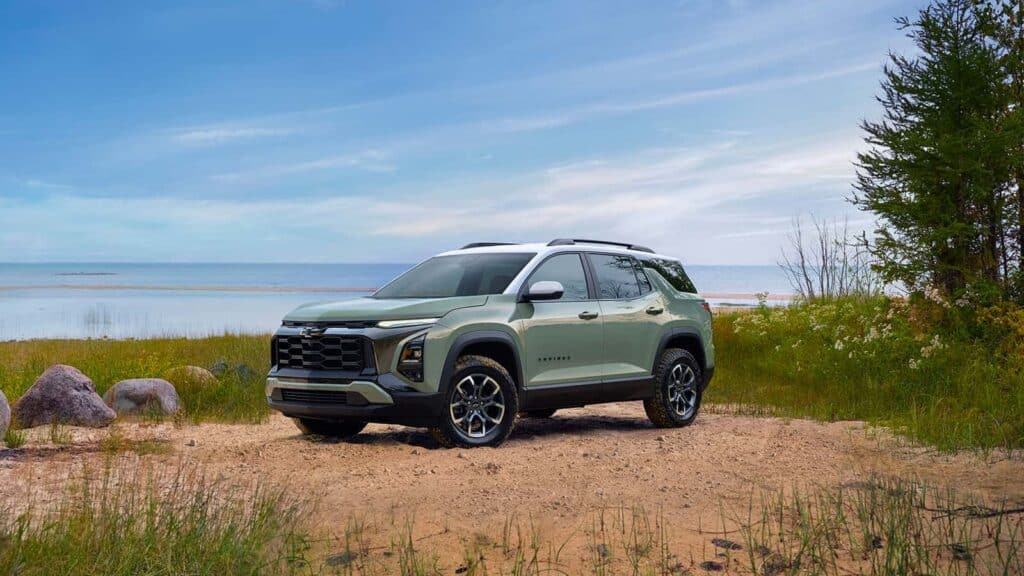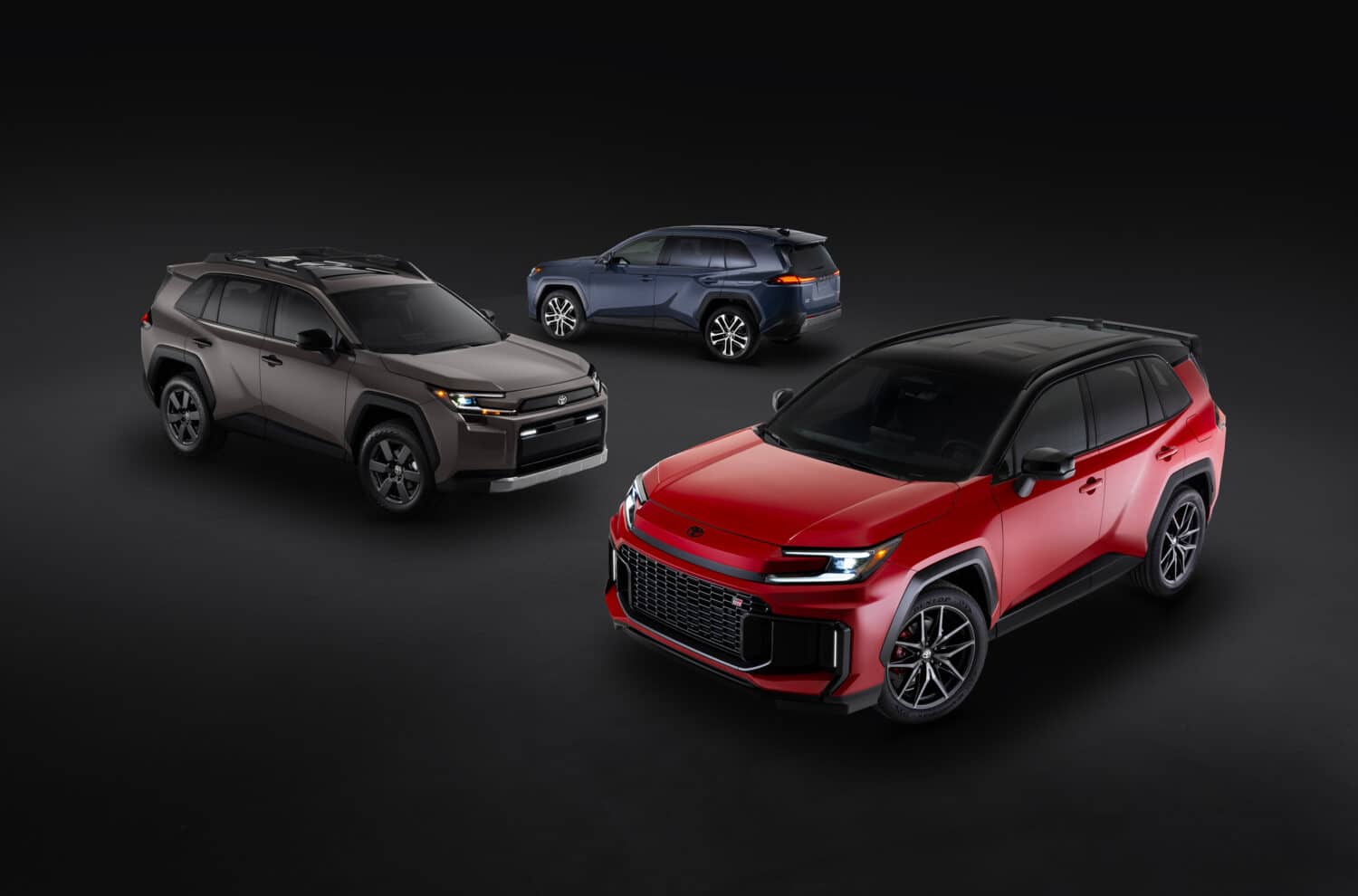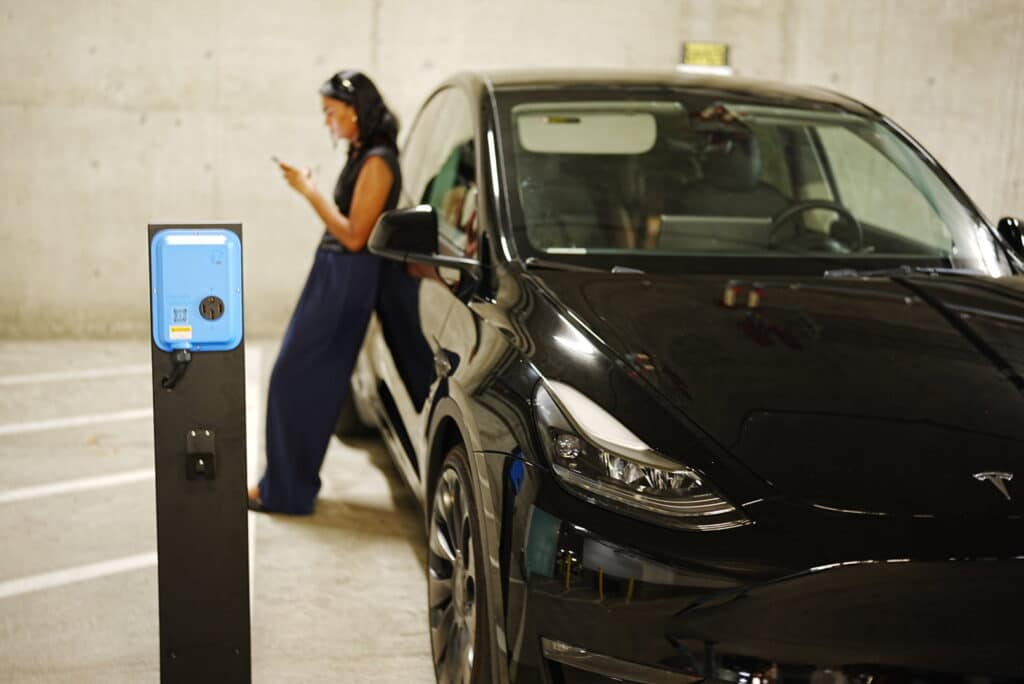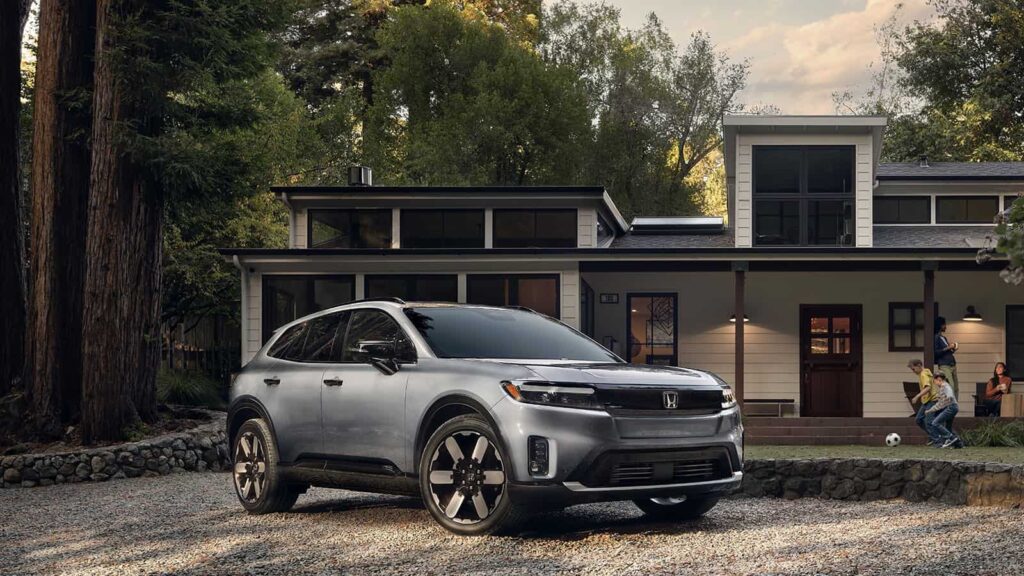BEVs, Hybrids Growing in US, BEV Barriers Remain Stubborn
Battery electric vehicles (BEVs) are still going strong with sales still growing in America despite a variety of persistent barriers. CNBC reported that sales of all-electric vehicles and hybrid models reached 20% of new car and truck sales in the U.S. for the first time in 2024. This marked a landmark year for BEVs and hybrid vehicles.
Auto data firm Motor Intelligence reported more than 3.2 million electrified vehicles were sold last year, or 1.9 million hybrid vehicles, including plug-in models, and 1.3 million all-electric models.
Gas or diesel internal combustion engine (ICE) vehicles still made up the majority of sales, but declined to 79.8%, falling under 80% for the first time in modern automotive history. Yet despite all of this progress, stubborn barriers to EV adoption remain.
U.S. Electric Vehicle Sales Increase More Than 10% Year Over Year in Q1
Nearly 300,000 new electric vehicles (EVs) were sold in the United States during the first quarter of 2025, according to Kelley Blue Book—an impressive 11.4% year-over-year increase. In a landscape often clouded by headlines of EV slowdowns, this data paints a different picture: despite mounting challenges, EV adoption in the U.S. is still growing at a steady and healthy pace.
Electric vehicles accounted for 7.5% of total new vehicle sales in Q1, up from 7% a year ago. But this growth isn’t evenly distributed across brands or models. Instead, the numbers show a market in transition, with automakers retiring old models and launching new, more competitive entries.
General Motors made a dramatic comeback. After struggling with delayed launches in 2023 and 2024, GM sold more than 30,000 EVs in Q1—nearly double its sales from the same period last year. The switch from the aging Chevy Bolt to the new Chevy Equinox EV marks a shift in strategy and consumer appeal.
Honda and Acura, absent from the EV market last year, debuted in Q1 with over 14,000 EV sales, thanks to a short-lived joint venture with GM.
Stellantis joined the EV fray, launching new EVs from Dodge, Jeep, and Fiat. While still in early stages, it’s a signal that even legacy automakers are gearing up for the electric transition.
Other key players—like Audi, Porsche, and Chevrolet—also introduced new models that helped keep sales momentum strong in an otherwise competitive and turbulent market.

Hybrid Growth Trends Reflect EV Adoption Barriers
The U.S. car market is experiencing a hybrid revival. Once considered a stepping stone to fully electric vehicles (EVs), hybrids are now holding their own—and even outpacing BEVs in some segments.
With tariff-driven price increases, inflation and interest rates pinching consumer wallets, and while BEV prices remain high, hybrids currently offer a more affordable entry into fuel-efficient driving than EVs. Many hybrid models, such as the Toyota Prius or Honda CR-V Hybrid, are priced significantly lower than their electric counterparts and don’t require home charging setups that can be costly in some cases. For price-conscious buyers, hybrids are a practical compromise between performance and savings.
Range anxiety and charging infrastructure remain top concerns for potential EV buyers. Despite the expansion of EV charging networks, public chargers can be hard to find, busy, or unreliable—especially in rural or suburban areas. Hybrids eliminate this worry. They run on gasoline and electricity, so you can fuel up at any gas station while still reaping some benefits of electrification.
While most incentives focus on EVs, some federal and state programs still support hybrid technology, particularly plug-in hybrids (PHEVs). Moreover, increasing regulatory pressure on automakers to improve fleet fuel economy means more manufacturers are pushing hybrid models to meet emissions targets without fully switching to EVs.
The Popular Toyota RAV4 will Now Be 100% Electrified
Toyota has stuck to its hybrid-first strategy while being cautious with full EV rollouts. This has paid off, the company reported 2024 electrified vehicle sales of 1,006,461, an all-time best ever, up 53.1 percent. This represents 43.1 percent of total sales volume. With this success, Toyota is ramping up its hybrid game in 2025 and beyond.
Toyota announced America’s best-selling compact SUV, the all-new, 2026 redesigned 6th generation RAV4 will now be 100% electrified, in a choice of Hybrid Electric Vehicle (HEV) or Plug-in Hybrid Electric Vehicle (PHEV) powertrains and no purely gas-powered option. As a crossover, it’s the the most popular vehicle type that U.S. buyers want. This is clear evidence that US buyers are embracing hybrids and leaving behind fully gas-powered internal combustion engine (ICE) vehicles in a big way.

The RAV 4’s latest PHEV system adds output, with up-to an impressive 320 combined system net horsepower, up 18 hp over the outgoing system. PHEV models are moving from two to four grades in model year 2026, with the Woodland and GR SPORT models joining the previously available SE and XSE.
Toyota announced all RAV 4 PHEV models will have standard AWD. The PHEV model also increases its all-electric driving range to a manufacturer’s estimated 50-mile range. The PHEV XSE and Woodland grades will have DC fast charging, capable of charging from 10% to 80% in approximately 30 minutes.
Why Multifamily Units Remain an EV Adoption Barrier
Fully electric and hybrid vehicles continue to gain popularity across the U.S., but not everyone is benefiting equally from the shift to cleaner transportation. One of the most overlooked groups in this transition is residents of multifamily housing—people who live in apartments, condos, and townhome communities. While EVs are increasingly seen as practical and even affordable, the reality is that for millions of Americans without a garage or private driveway, owning an electric vehicle still poses significant challenges.
Perhaps the most obvious issue is charging. Unlike single-family homeowners who can install a Level 2 charger in their garage and conveniently charge overnight, multifamily residents rarely have that option. Most apartment complexes and condo buildings were not designed with EV infrastructure in mind. Tenants often park in shared lots or garages, where individual electrical access is unavailable or restricted. Even in newer buildings that offer some charging stations, the number of plugs is usually far too limited to serve the full community. This forces would-be EV owners to rely on public charging, which is not only less convenient but often more expensive and time-consuming.
Installing charging stations in multifamily settings is no small task. Property owners are often reluctant to make the investment, given the high costs and logistical complexity of retrofitting older electrical systems. In many cases, adding even a few chargers requires upgrading power panels, trenching through parking lots, securing permits, and navigating utility requirements. For landlords, especially those managing older or lower-rent properties, the return on such an investment isn’t always clear—especially when only a small portion of tenants currently drive EVs. This creates a feedback loop: without charging, there’s no demand for EVs, and without EVs, there’s no perceived need for charging.
Policy support has not kept pace with these challenges. Although some states and cities have adopted “right to charge” laws or offer rebates to help offset installation costs, these programs are often inconsistent, underfunded, or difficult to navigate. Federal support tends to favor commercial projects and private homeowners, leaving multifamily communities caught in the middle. As a result, many renters find themselves excluded from the very incentives designed to promote EV adoption.
Without access to home charging, multifamily residents depend heavily on public charging stations. But public infrastructure is unevenly distributed and often concentrated in wealthier neighborhoods or along highways. Charging away from home means making special trips, waiting in line, and sometimes dealing with broken or incompatible chargers. For someone juggling work, family, or a tight schedule, this level of inconvenience can be a major deterrent to owning an EV. It also undermines one of the core benefits of electric vehicles: the ability to “refuel” while you sleep.
The lack of charging access among multifamily households is not just a matter of inconvenience—it’s also an equity issue. Many apartment dwellers are from lower-income or historically underserved communities. Without reliable and affordable EV charging, they miss out on the long-term cost savings that come with driving electric, such as lower fuel and maintenance expenses. More broadly, the transition to electric vehicles is a key strategy for reducing transportation emissions, but that strategy falls short if it doesn’t include the people most affected by pollution and climate change.
Compounding all of this is a general lack of awareness and education. In communities where EVs aren’t already common and chargers aren’t visible, potential buyers may simply assume that electric cars are not for them. Outreach efforts have often focused on suburban homeowners, leaving renters and city dwellers out of the loop.
Pando Electric Leads Multifamily EV Charging
Pando Electric is solving the multifamily EV charging problem, reimagining how EV charging works in everyday spaces, from apartment complexes to office parking lots.
At the heart of Pando Electric’s mission is a commitment to a cleaner, more accessible future. The company provides affordable, smart, and efficient EV charging solutions designed to meet the needs of modern life. But this isn’t just about plugging in. Pando offers a fully integrated ecosystem—hardware, software, and service all working together—to create a seamless experience for drivers and property owners alike.

What sets Pando apart is its focus on multi-family and commercial properties, where the challenge of EV adoption is most pressing. Traditional charging infrastructure wasn’t built with shared spaces in mind. Pando’s purpose-built approach means chargers are not only compatible with all electric vehicles, but also easy to manage, maintain, and scale.
For property managers and building owners, Pando delivers a turnkey solution. That means no guesswork and no juggling multiple vendors. Everything from site assessment and installation to user support and performance monitoring is handled under one roof. The result? Faster deployment, happier tenants, and a strong signal to the market that sustainability matters.
For drivers, Pando’s smart charging technology ensures reliability, transparency, and ease of use. With features like app-based access, real-time usage tracking, and flexible pricing, the experience is designed to be intuitive and fair. No more fighting over limited plugs or wondering if the charger is working.
The road to widespread EV adoption must be inclusive. That means finding creative solutions that bring charging to where people live, not just where it’s easy. Whether through policy reform, technological innovation, or business models that make chargers rentable and shareable, the industry needs to address the gap in access faced by multifamily residents. Without doing so, the clean transportation future we’re building will remain out of reach for millions of Americans.
Honda Is Backing Off Its Big EV Plans
In a move that’s raising eyebrows across the auto industry, Honda is pulling back from its aggressive electric vehicle (EV) push, choosing instead to double down on hybrid technology. The decision, announced last week by Honda CEO Toshihiro Mibe, marks a significant shift for the Japanese automaker, which had previously laid out a bold plan for electrification. Just a few years ago, Honda had set its sights on making 30% of its global vehicle sales electric by 2030.

Honda is adjusting its course—lowering its EV development investment from 10 trillion yen through 2031 to 7 trillion yen. Mibe was quick to reassure stakeholders that Honda’s long-term electrification strategy remains intact. But the near-term message is clear: expect fewer EVs and a lot more hybrids.
This pivot puts Honda on a path more closely aligned with Toyota, which has long taken a more cautious approach to full electrification. Toyota’s strategy—leaning into hybrids as a reliable, scalable solution—has paid off handsomely, with hybrid models now available across much of its lineup. Honda is hoping to follow suit, leveraging its own legacy of hybrid innovation dating back to the 1990s.
The reasons for Honda’s recalibration are complex but not surprising. The EV market is still maturing, and despite a steady increase in sales, consumer adoption faces real barriers—price, infrastructure, and policy uncertainty among them. For automakers, that creates a tricky balancing act: invest enough in electrification to stay relevant and compliant, but not so much that they get ahead of market demand.
By leaning into hybrids, Honda is betting on a more pragmatic path forward—one that reduces emissions without requiring a complete overhaul of consumer behavior or global supply chains. Hybrids, after all, still offer better fuel economy and lower emissions than traditional gas-powered vehicles, while sidestepping range anxiety and charging access issues.
Still, the move comes at a time when other automakers are charging full-speed ahead into the electric future. General Motors, Hyundai, and even luxury brands like BMW and Mercedes-Benz continue to ramp up their EV offerings and investments. Honda’s scaled-back approach may buy time and flexibility in the short term, but it risks falling further behind in the long game.
Why the Future of Transportation Is Battery Electric, Not Hybrid
At a time when the automotive industry is being pulled in multiple directions—between tightening emissions rules, fluctuating fuel prices, and evolving consumer habits—the question of what powers the vehicles of tomorrow has never been more important. While hybrids once seemed like the perfect compromise, blending internal combustion engines with electric motors, that era will rapidly fade. The future of transportation is not hybrid. It’s fully battery electric.
For years, hybrids offered a clever solution to a simple problem: how to cut fuel use without giving up the familiarity of gasoline. But in 2025, that middle-ground solution is starting to show its limits. Hybrids still rely on fossil fuels, which means they continue to produce tailpipe emissions and depend on global oil markets. A technology that only reduces emissions isn’t enough anymore. We need to eliminate them entirely.
Battery electric vehicles (BEVs), on the other hand, have no tailpipe at all. They’re quiet, clean, and increasingly cost-effective. Advances in battery technology are extending range, shortening charge times, and lowering manufacturing costs. While hybrids currently have the edge in practicality and affordability, BEVs are now catching up fast—and in many cases, surpassing them. Models on the road today offer 250–400 miles of range, while public charging infrastructure is expanding rapidly, making it easier than ever to live with an EV, even without a garage.
Then there’s the issue of complexity. Hybrids pack two drivetrains into one car, which can mean more parts, more maintenance, and more ways for things to go wrong. Battery electric vehicles are simpler by design. With fewer moving parts, they require less upkeep, reducing long-term costs for drivers and fleets alike. That’s one reason why more automakers are betting big on BEVs, not hybrids, as their long-term strategy.
The environmental math is also becoming impossible to ignore. Even accounting for battery production, BEVs have a significantly lower carbon footprint over their lifetime compared to gas-powered or hybrid vehicles. And as the electric grid itself becomes greener—thanks to wind, solar, and other renewable sources—the emissions advantage of BEVs will only grow.
Consumer interest is shifting as well. People increasingly want vehicles that reflect a changing world and a cleaner future. Battery electrics offer a vision of what’s possible: zero-emissions driving, advanced tech integration, and a complete break from the gas station. Hybrids, meanwhile, feel like a halfway measure—a temporary fix in a world that’s ready for full transformation.
That doesn’t mean hybrids haven’t played an important role. They’ve introduced millions to electric driving and helped automakers improve efficiency across the board. But they were always a stepping stone, not the destination. The tipping point is here, and the road ahead is fully electric.

Electric Vehicle Marketing Consultant, Writer and Editor. Publisher EVinfo.net.
Services